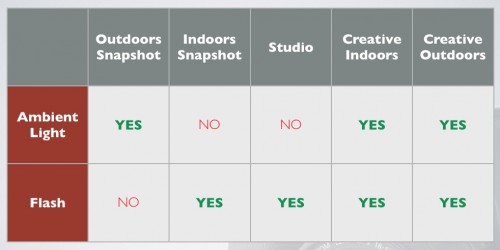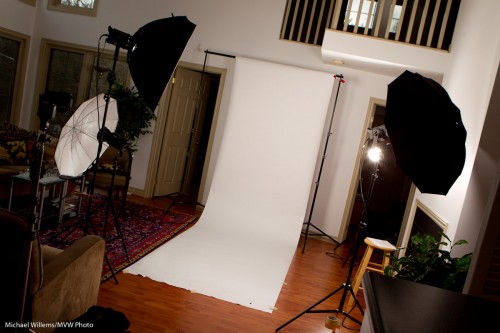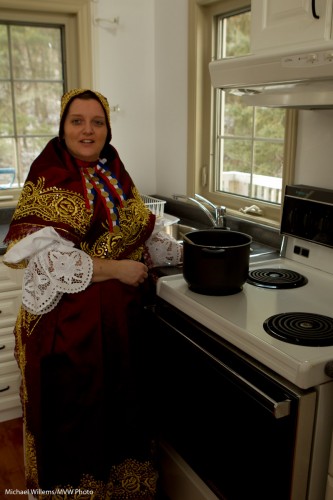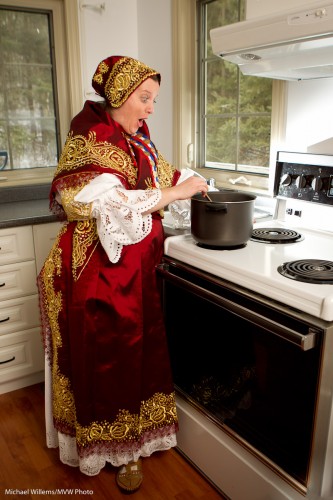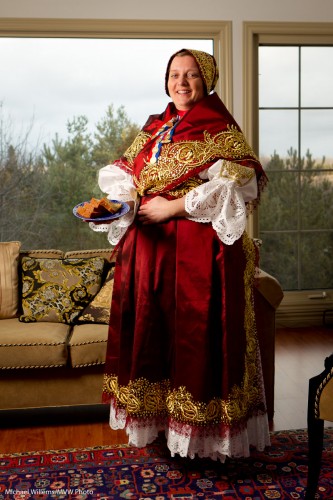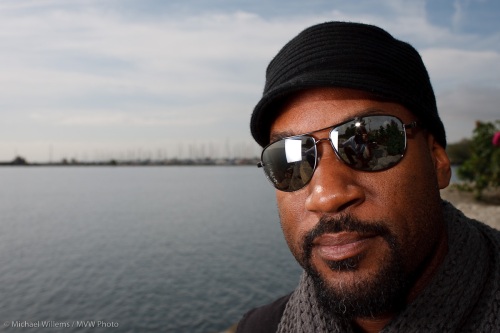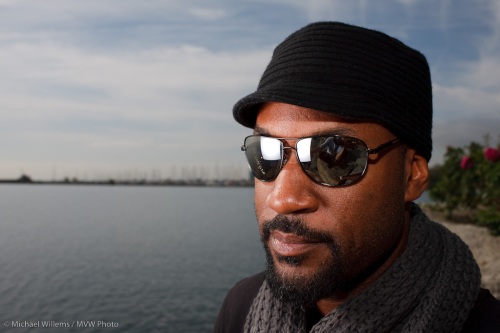First question I always ask myself when taking a flash picture is: “who does the work?”.
What I mean is: is the light in the image just from the flash? Or just from ambient? Or from both?
Clearly :
- When it is just from flash, the ambient needs to be dark (so I set my exposure for that).
- When it is mixed, I set the ambient so that is is the right level compared to the flash.
- In a mixed environment, sometimes I want to turn ambient UP (as in a party indoors), and sometimes DOWN (as in a dramatic portrait). The principle, however, is always the same: worry about what you need from ambient (from all-dark to bright), then worry about the flash.
And mixing is essential. This is how I look at most of my images:
WHICH LIGHT DOES THE WORK:
As you see, in most creative work, I like to mix the two light sources.
If you do not think of this, you will get unpredictable results.
So before hitting that flash, always ask first:
In this picture, do I want to mix light, and if so, what should the ambient light look like?

